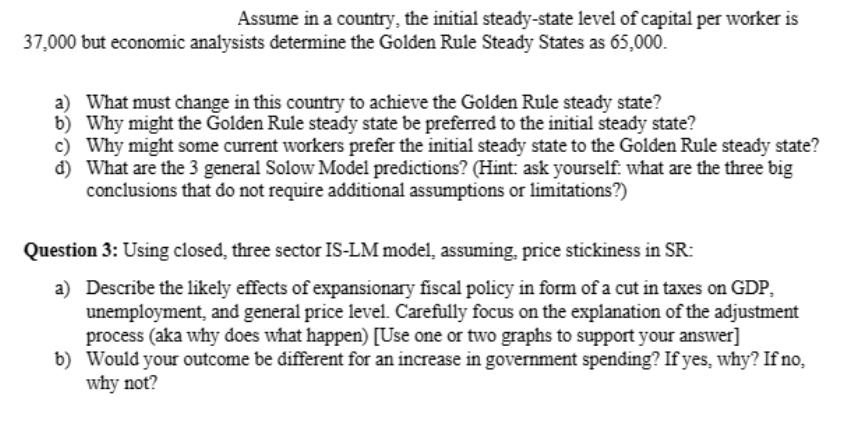Answered step by step
Verified Expert Solution
Question
1 Approved Answer
Assume in a country, the initial steady-state level of capital per worker is 37,000 but economic analysists determine the Golden Rule Steady States as

Assume in a country, the initial steady-state level of capital per worker is 37,000 but economic analysists determine the Golden Rule Steady States as 65,000. a) What must change in this country to achieve the Golden Rule steady state? b) Why might the Golden Rule steady state be preferred to the initial steady state? c) Why might some current workers prefer the initial steady state to the Golden Rule steady state? d) What are the 3 general Solow Model predictions? (Hint: ask yourself: what are the three big conclusions that do not require additional assumptions or limitations?) Question 3: Using closed, three sector IS-LM model, assuming, price stickiness in SR: a) Describe the likely effects of expansionary fiscal policy in form of a cut in taxes on GDP, unemployment, and general price level. Carefully focus on the explanation of the adjustment process (aka why does what happen) [Use one or two graphs to support your answer] b) Would your outcome be different for an increase in government spending? If yes, why? If no, why not?
Step by Step Solution
★★★★★
3.43 Rating (159 Votes )
There are 3 Steps involved in it
Step: 1
Question 2 Solow Model a To achieve the Golden Rule steady state of capital per worker 65000 the country needs to increase its savings and investment ...
Get Instant Access to Expert-Tailored Solutions
See step-by-step solutions with expert insights and AI powered tools for academic success
Step: 2

Step: 3

Ace Your Homework with AI
Get the answers you need in no time with our AI-driven, step-by-step assistance
Get Started


